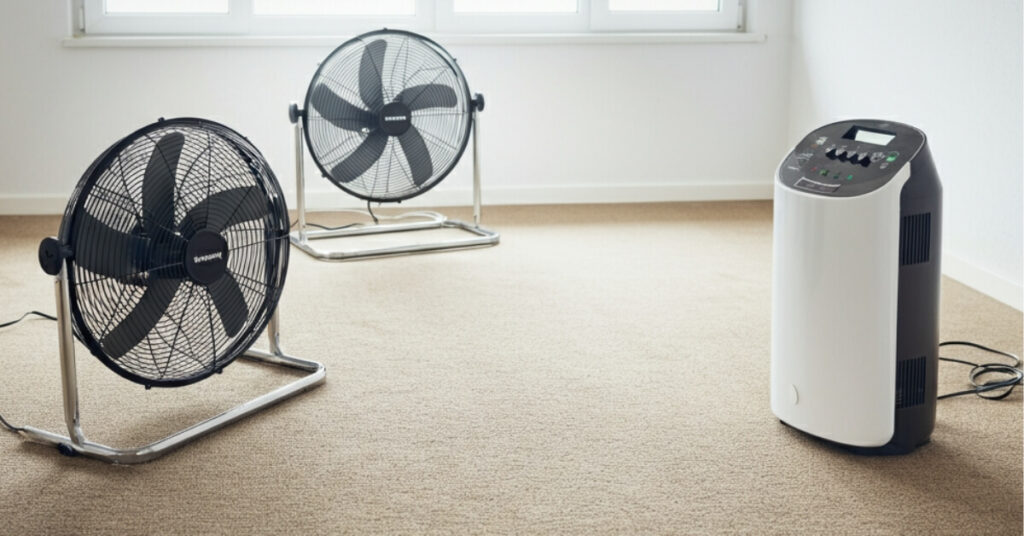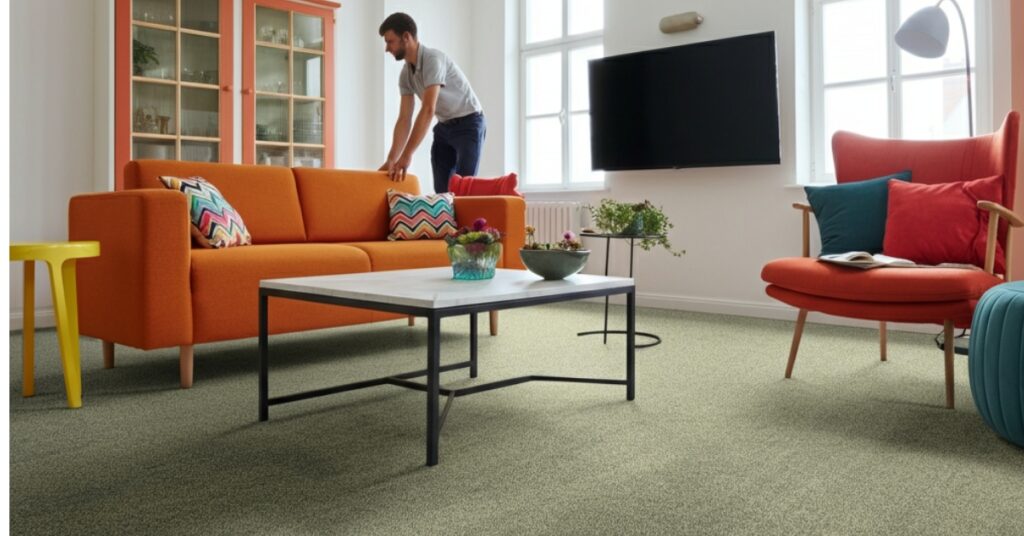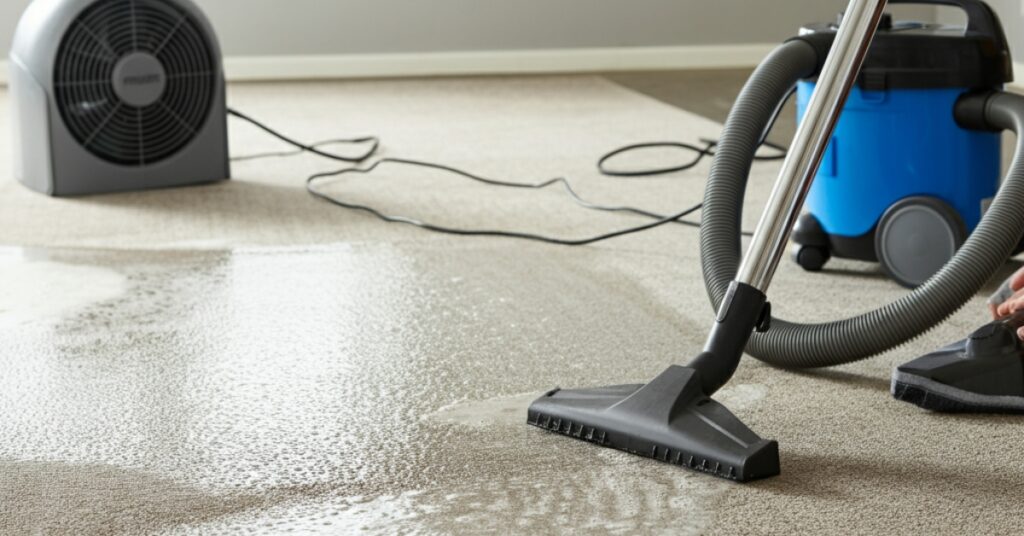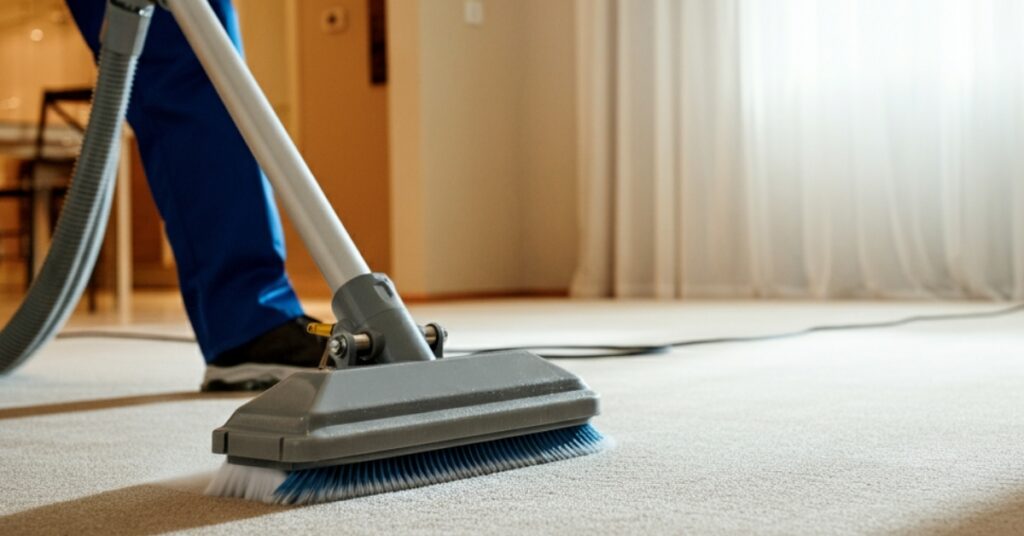As an Amazon Associate, I earn from qualifying purchases.
Cleaning your carpets can be an arduous task, but it is equally essential to remember that waiting for them to dry is just as vital. A well-dried carpet ensures that the air within the house is fresh, foul odors are minimized, and the chances of mold development or fragile fibers over time are significantly reduced.
If you are expecting guests, babysitting, or simply want to return to your regular routine, knowing how long it takes for carpets to dry can help free up your schedule.
In this ultimate guide, we will walk you through the average drying times based on the cleaning method used, what factors can speed up or slow down the process, practical ways to dry them faster, how to detect problems, and answers to frequently asked questions, complete with product suggestions for the fastest and best results.
Contents Overview
Typical Carpet Drying Times by Cleaning Method
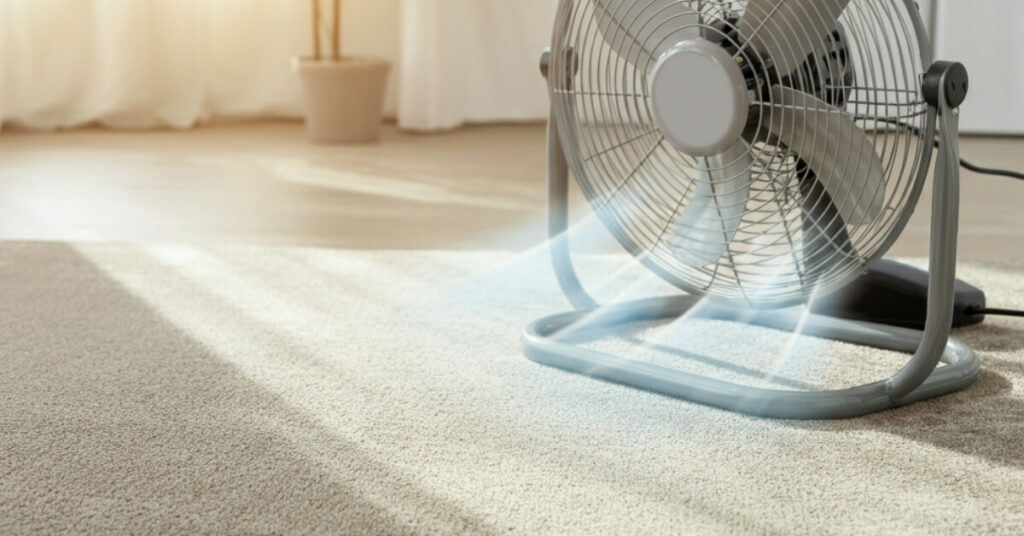
Different cleaning techniques introduce varying levels of moisture and require different minimum drying periods across methods. A carpet will take a significantly shorter time to dry after the epilation shampooing method due to the minimal moisture compared to the soaking shampoo method.
1. Steam Cleaning (Hot Water Extraction): 6–12 Hours
Most experts agree that steam cleaning, also known as hot water extraction, is one of the most effective ways to deep-clean your carpets. If you’ve ever wondered how does a carpet steam cleaner work, the process involves injecting a hot water and detergent solution deep into the carpet fibers. Once loosened, the dirt and grime are vacuumed away, leaving your carpet fresh and residue-free. Because it uses a substantial amount of water, carpets typically need 6 to 12 hours to dry fully.
To speed up the drying process:
- Use a high-powered fan to move air across the carpeting.
- Open windows or use a dehumidifier to reduce moisture in the air.
2. Shampooing: 6–10 Hours
Residential carpet shampooing is not as common as steam cleaning, but it is often used for commercial heavy-duty cleaning. The foam cleanser performs well, but it leaves the carpet wet. It usually takes between 6 and 10 hours to dry, based on the amount of water removed during the rinsing step and the room conditions.
Key tips:
- Carpet shampooing works best to refresh carpets, so dampen the carpet lightly.
- Do not leave the carpet infested with moisture. Extract as much water as possible with a wet vacuum.
3. Dry Cleaning (Encapsulation): 1–4 Hours
If time is of the essence, encapsulation or dry cleaning would be best suited for you. This method is performing a ‘cleaning’ where an applied solution that crystallizes dirt is subsequently vacuumed away. It’s the most efficient method in terms of drying, with an estimated time of 1- 4 hours.
4. Bonnet Cleaning: 2–6 Hours
Between steam and dry cleaning sits Bonnet cleaning, which utilizes a rotary floor machine alongside an absorbent bonnet pad soaked in a cleaning solution. Although often observed in commercial establishments, it can also be found at homes for maintenance cleaning. Drying time depends on the method utilized and ranges from 2 to 6 hours.
5. DIY Cleaning: Varies—Often Slower
Using rental machines or DIY solutions has the potential to yield great results; however, without the professional extraction tools, most users will end up using more water than is needed. Expect drying times anywhere from 8-24 hours; most times, if carpet pads retain moisture, excess water lengthens dry time.
Factors That Affect Carpet Drying Time
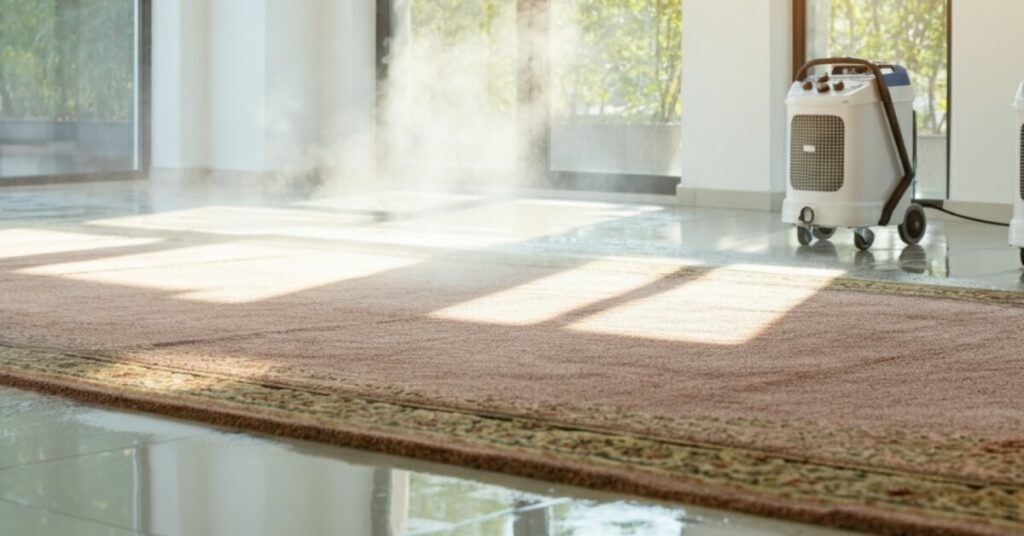
As with any method of cleaning, there are multiple factors that could impact the duration your carpets take to dry. Below are some of the factors to keep in mind.
Temperature and Humidity
Your carpet dries as a result of evaporation. In humid areas with excess moisture in the air, the process is much slower; however, in warm and dry areas, it is much quicker. During the summer, ensure windows are open as heat coupled with breeze works wonders for the drying process. In winter, use your home’s heating system for warmth, and in summer, open windows.
Air circulation and Trade Wind
Moving moist air from your carpet is crucial towards ventilation. In a closed room this stale air may trap moisture in the carpet fiber which will prolong the process. To alleviate the problem, use air and ceiling fans to push air across and up the carpet’s surface. Also, place windows and fans on opposite sides to create cross ventilation and increase airflow.
Carpet Thickness and Material
Not all carpets are equal. Wools tend to be thicker and more plush, which hold more water and take longer to dry compared to lower pile or synthetic carpets like nylon or polyester.
The Amount Of Water Used
Steam cleaning carpets tends to use the most water compared to dry and bonnet cleaning methods. More water equals longer dry time, while using less water speeds up drying time. Following the cleaning guidelines isn’t just for safety; there are limits to how much water you can safely use (over-wetting causes trouble as well).
Type of cleaning solution
Stuffy shampoos and DIY cleaners tend to take longer to dry if not fully rinsed, while low-moisture solutions of encapsulating cleaners of dry powders evaporate much faster. Reclaiming your space is as simple as taking these practical steps with the right products.
How to Speed Up Carpet Drying
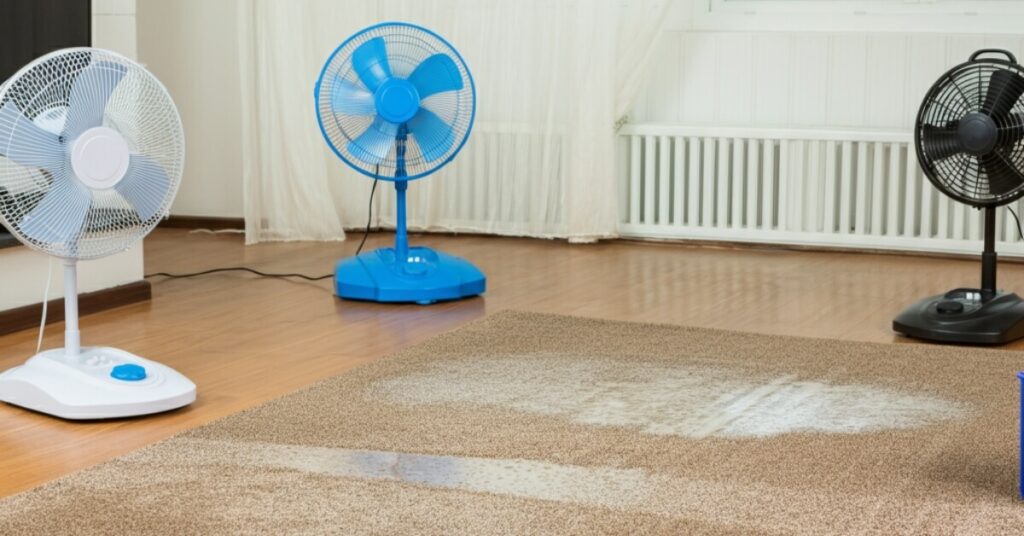
No one wants to tiptoe around damp carpets for longer than necessary! Use these practical steps and product recommendations to reclaim your space faster.
1. Open Windows and Doors (Weather Permitting)
For places like windows, shoes, or doors, granting access to fresh air is very helpful. If the weather is good, make sure to fully open as the steam can escape.
2. Use Fans and Ceiling Fans
Fans can improve airflow across your carpet, which helps disperse water molecules into the air for faster evaporation. If you need even more of a push, try an air mover like the Soleaire Super Cyclone Air Mover for focused drying.
3. Run a Dehumidifier
Using a dehumidifier is effective for steam vapor removal in a humid environment, badly ventilated rooms, or rooms with bad airflow because it removes water vapor from the air. This will reduce the carpet’s surface humidity as well as dampen other surfaces.
4. Avoid Walking on the Carpet
Walking onto a damp carpet will cause the fibers to become compressed, which will make the carpet slower to dry and increase the risk of re-soiling. Whenever possible, keep the room closed off. If movement is required, then place clean towels or plastic runners down.
5. Use Towels to Blot Excess Moisture
If your carpets still retain some stubborn wet spots, then placing clean, dry, and absorbent towels over the area, you can gently press down and lift the stubborn wet spots. If the towels are soaked, replace them immediately. This technique is brilliant if carpets are frequently walked on.
Every little improvement in airflow and ventilation increases waiting time, resulting in a cleaner-smelling and feeling carpet.
What Happens If Carpet Stays Wet Too Long?
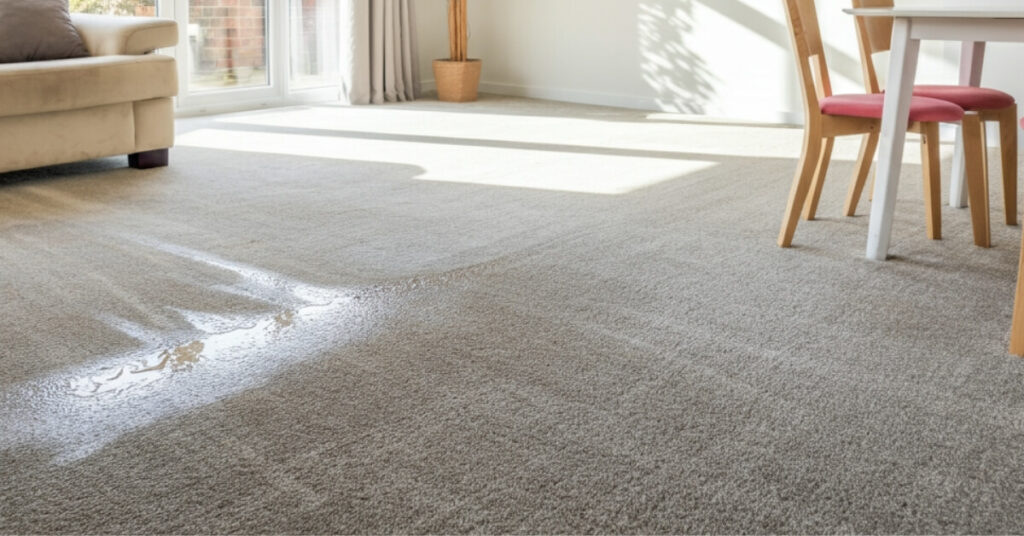
Drying is critical for comfort, health, the longevity of your carpet, and the air in your house. If you let moisture linger, here’s what could potentially happen:
1. Risk of Mold and Mildew
Mold and mildew flourish in the damp. Wet carpets, especially those with padding underneath, can become moldy within 24-48 hours. This contributes to musty odors and allergy flare-ups, and can lead to more serious health issues with continued exposure.
2. Musty Odors
If carpets are not dried thoroughly, dampness can allow bacteria to thrive, leading to unpleasant odors that can resurface with humidity or rain.
3. Fiber Damage
Damage of carpet’s fibers that include weak, fray, or discoloration are signs that it has been wet for too long, and moisture is breaking down the carpets on a microscopic level.
4. Stains and Wicking
The carpet’s backing has old and forgotten stains and soils. Dampness and moisture can trigger these stains to rise, resulting in unsightly brown spots or discoloration after cleaning. This process is known as wicking. To ensure the best results, add airflow and check to see if moisture remove processes need to be done again if wetness is present even after 24 hours.
FAQs
1. How long should I wait before walking on my carpet after cleaning?
Generally, you should wait at least 6 to 8 hours before stepping on your carpet. For best results, especially after heavy-duty steam cleaning, 12 hours is ideal. If you must walk through, wear clean, dry socks or use a clean pathway to avoid transferring dirt and moisture.
2. Can I sleep in the room after carpet cleaning?
Yes, as long as the carpet is mostly dry and there is active ventilation. Place fans, open windows, or use your HVAC system to keep air moving overnight.
3. How do I know when my carpet is completely dry?
Check by pressing a dry, white towel or paper towel onto the carpet. If you feel any coolness or the towel feels damp, the carpet still has moisture. Wait a bit longer for a completely dry feel.
4. Does turning on AC help dry carpet faster?
Yes. Air conditioning cools the air and removes humidity, which helps carpets dry out. Combine it with fans for maximum effect.
5. Is it okay to vacuum damp carpet?
It’s best to wait until the carpet is fully dry before using a regular vacuum, as moisture can harm your machine and trap dirt in the fibers. Use a wet/dry vac if you need to extract leftover water before the carpet is fully dry.
Conclusion
To sustain a thorough and long-lasting clean on your carpet, it needs to be dried properly after cleaning. Neglecting this step allows mold and odors to accumulate, causing discomfort. Most carpets take between 6 and 12 hours to dry, but this time is highly influenced by the cleaning method used, the room’s climate, the type of carpet, and other factors.
By taking these factors into account, along with tips such as providing airflow, using fans or dehumidifiers, blotting excess moisture, and avoiding foot traffic while the carpet dries, you won’t have to wait long.
As an Amazon Associate, I earn from qualifying purchases.
